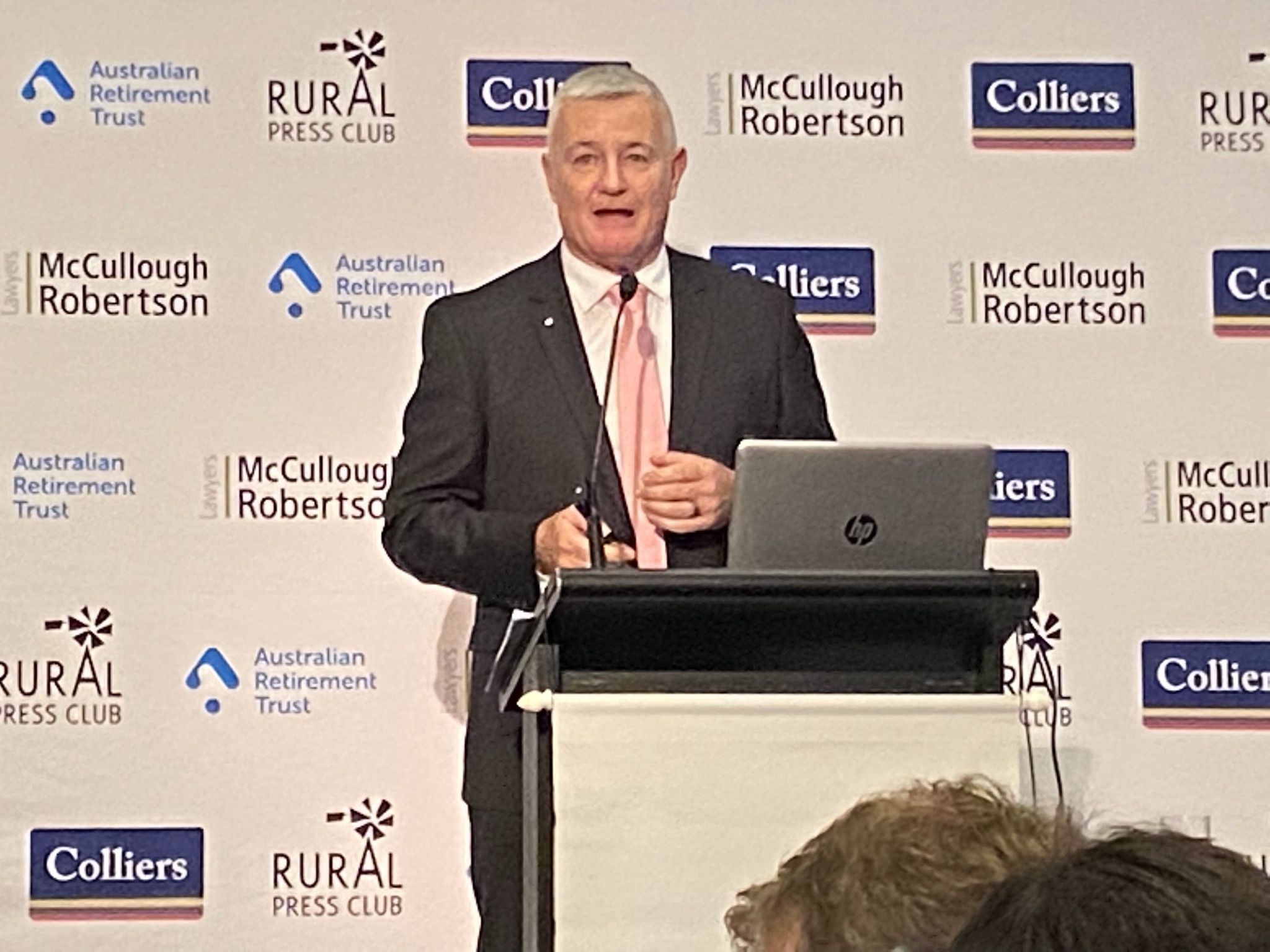Advocacy helps with big win for growers in Dawson Valley
A message from Cotton Australia Chief Executive Officer Adam Kay...

Cotton Australia (CA) exists for its growers, and everything we do is on behalf of the growers and families running their 1500 cotton farms in Australia, predominantly in NSW and Queensland.
Recently there has been a clear example of how advocacy can bring about positive results that benefit growers and in turn jobseekers and the broader community through spending on inputs purchased at local suppliers and service providers.
Our role is to support the Australian cotton industry to be world-competitive, sustainable and valued by the community. Together with our growers, we drive the industry’s strategic direction, maintain a strong focus on research and development, promote the strengths of the industry including its environmental credentials and implement policy objectives.
The Queensland Government’s Water Act 2000 was amended to allow the temporary release of Strategic Water Infrastructure Reserve (SWIR) water for a maximum of three years where infrastructure projects have been deferred. This related to the Dawson, Connors and Fitzroy Rivers where water has been reserved for the future development of infrastructure projects.
From 2016 Cotton Australia, in conjunction with Dawson Valley cotton growers and local growers, began an extensive campaign of engagement with the then Queensland Water Minister Anthony Lynham, in an attempt to access that water for cropping. That advocacy and engagement process resulted in the government agreeing to the release of up to 90,000ML of water in a three-year trial program to Dawson Valley irrigators.
In the government’s own recently released report on the trial, it was stated that ‘the objectives of the pilot project were to provide ability for water users on the Dawson River to temporarily access committed water reserves under a water licence with the intent to support the existing suite of measures providing flexible water management that strengthens job creation and economic development and provide a short-term stimulus for the water trading market’.
Of the 90,000 megalitres (ML) of unsupplemented water made available 69,500ML was granted to 12 licensees on 1 October 2019 for three years. The condition was that water could only be taken under certain flow conditions with limitations on daily and annual maximum volumes to ensure existing entitlement holders were protected. The trial period came to an end on 30 September 2022.
The government’s report on the trial gave some interesting insights. Among them:
• Water taken under SWIR licences was less than the maximum allowable annual volume in all three years.
• The average unsupplemented water use in the DVWMA increased by 17%.
• The average supplemented water use in the Dawson Valley Water Supply Scheme (DVWSS) increased by 5%.
Perhaps the most impressive outcomes were economic:
• An increase in irrigation area of approximately 1,900 hectares (ha) for land attached to 11 SWIR licences. The area of development was similar to the cumulative area proposed to be developed from submissions made during the release process.
• Cotton Australia confirmed the release contributed to an increases area of cotton production of 2,300ha, amounting to approximately 23,000 lint cotton bales extra per annum, worth approximately $16 million, along with $2 million worth of cotton seed.
The Government’s draft report on the three-year trail found that in addition to the increase in irrigated area, additional water security allowed for double cropping opportunities providing even greater economic outcomes leading to increased employment opportunities on farm and local industry which further supported the local community.
Led by General Manager Michael Murray, Cotton Australia supported a formal submission on the draft report with numerous direct communications with government at Ministerial and senior public service level while urging the Queensland Government to expedite a second release.
The rationale was to provide a degree of continuity so farmers and their community can benefit from the economic and social outcomes during the 2022/23 season and beyond. The effort was supported by the Dawson Valley Cotton Growers Association, local growers and the QFF.
Much to the delight of local irrigators, on the 1 September, the Government issued a media release announcing its response announcing: a new three-year water release from the Dawson River.
Queensland Minister for Water Glenn Butcher said the three-year-only release was good news for irrigators and businesses in the Dawson River catchment.
“This release offers irrigators certainty for the next three years, but it’s not only the irrigators who benefit from the temporary fixed price water release.
“Jobs are created by expanding agriculture, but there are also extensive benefits to the community from the economic flow-on effects, such as farm workers spending up in the local shops and businesses,” he said.
“Water is the lifeblood of communities and is at the heart of our regional economies. Making best use of our water resources is important for communities and can drive good agricultural opportunities that benefit the wider region.”
Submissions by irrigators for the next three years closed recently and announcements will be made soon as to the successful applicants.
What is clear is that the Dawson Valley will be celebrating this decision by the Queensland Government, and we thank them for giving appropriate consideration of our submission and others in making the right decision.
While we understand the leases will end in three years and there are no guarantees of further releases under the Scheme, the economic benefits flowing through from growers to communities over the six-year period cannot be overestimated.
As CEO of Cotton Australia, this effort by Michael and everyone involved goes to the core of what Cotton Australia is here to achieve. We want the best outcomes for our farmers, and our politicians need the best information and the best advice that can only come from growers themselves.
In mid-November the industry comes together at the next General Meeting in Sydney. It’s meetings like these that provide a valuable opportunity to discuss priorities, including research and development priorities that will steer our efforts in the coming months and years.
